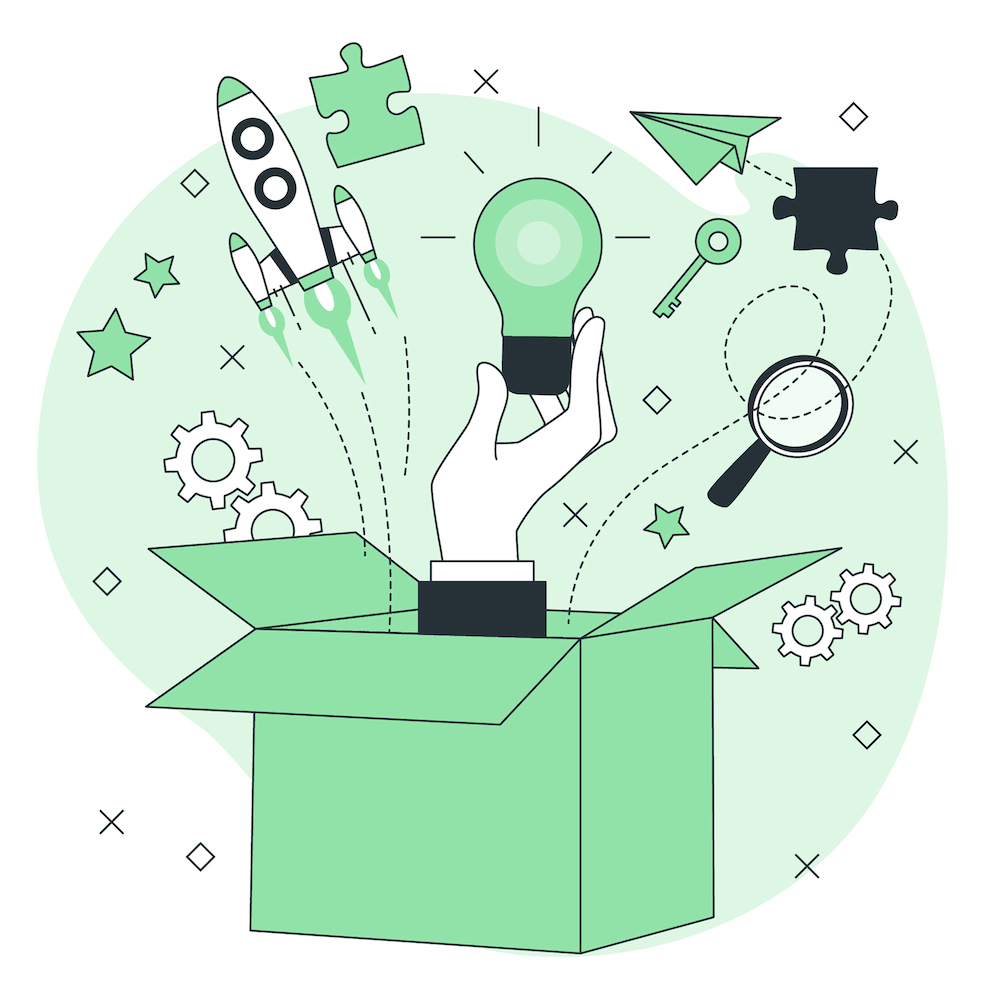This comprehensive guide will walk you through the essentials of concept testing, covering everything from the fundamental methods of testing concepts to designing an effective concept testing survey
In the fast-paced world of product development and marketing, concept testing stands out as a crucial step that can significantly determine the success or failure of your ideas before they hit the market. By exploring the concept testing definition, you equip yourself with the understanding needed to validate your concepts, gauging potential customer interest, and refining products or services based on feedback. This process not only saves valuable time and resources but also maximizes the chances of your product's market success by ensuring it resonates with the target audience from the get-go.
This comprehensive guide will walk you through the essentials of concept testing, covering everything from the fundamental methods of testing concepts to designing an effective concept testing survey. You'll be introduced to the variety of concept testing methods available, the benefits of implementing these strategies, and how they can be applied in real-world scenarios. Moreover, through examining concept testing examples and use cases, you'll gain insights into how businesses leverage these practices to refine their offerings, tailor marketing strategies, and ultimately, achieve remarkable success with their ventures.
What is Concept Testing?
Concept testing is a research method that involves asking potential customers about your ideas for a product or service before its official launch. This allows you to gauge customer acceptance and their willingness to purchase, enabling you to make critical decisions early in the development process. By engaging in concept testing, you can explore the viability of a product or service with its target audience, significantly improving its development based on the feedback received.
This method is not just about validating existing ideas; it's a proactive approach to refining product concepts that have been developed to some extent but require further definition to ensure they meet consumer needs. Concept testing differs from brand testing, advertising, or marketing campaigns, which typically promote a product or service when it's near-complete or fully developed. Instead, concept testing focuses on the early stages of product development, where the potential features and benefits are still being shaped.
Understanding the Process of Concept Testing
Concept testing involves several steps, starting from identifying the problem or opportunity in the market to developing hypotheses about what the product should do. It incorporates feedback mechanisms such as surveys, interviews, and focus groups to collect qualitative and quantitative insights from target users. This feedback is crucial as it informs the go-to-market strategy, helping brands understand how receptive customers might be to the product.
The Role of Concept Testing in Product Development
Incorporating concept testing at the beginning of the product development process ensures that there is a genuine need for the product. It continues to play a role throughout the product development cycle, allowing for adjustments based on ongoing user feedback. This method serves as a bridge between the initial scoping of the problem and the detailed design and development phases. By continuously engaging with your target audience, you can refine your product to better meet their expectations and increase the likelihood of its success.
Concept testing is essential not only for evaluating the potential success of new products but also for existing products where updates or iterations are being considered. It allows businesses to test assumptions about the target market's needs and their willingness to purchase solutions, thereby guiding significant investment decisions in product development.
In summary, concept testing is a crucial element of the product development process that helps ensure the final product is well-received by the target market, thereby increasing its chances of success. By listening to and incorporating feedback from potential users early on, businesses can avoid costly mistakes and launch products that truly meet consumer needs and preferences.
Benefits of Concept Testing
Identify Customer Preferences
Concept testing allows you to directly engage with your target audience to understand their preferences and expectations. Through methods such as surveys and focus groups, you gather valuable insights into what features your customers value most, their price sensitivity, and how they might use the product. This feedback is crucial for tailoring your product to meet the actual needs and desires of your market, ensuring it resonates well upon release.
Reduce Market Risks
By implementing concept testing early in the product development process, you significantly mitigate the risks associated with launching a new product. This proactive approach helps identify potential flaws and market misalignments before they become costly. Testing concepts with real users helps in spotting issues that might have been overlooked during the initial design phase. Moreover, it provides a clear indication of whether the product meets the market needs, reducing the likelihood of a product failing to gain traction.
Enhance Product Development
Concept testing contributes to a more informed and refined product development process. By incorporating feedback from potential users early on, you can make necessary adjustments to improve the product’s design, functionality, and appeal. This not only enhances the product's overall quality but also boosts innovation within your team. As you iterate based on user feedback, your product evolves to better meet customer expectations, increasing the chances of its success in the competitive market.
By engaging in concept testing, you not only align your product more closely with consumer expectations but also streamline the development process to focus on features that offer the most value, thereby optimizing resource allocation and enhancing product viability.
Concept Testing Methods
Comparison Testing
Comparison testing, also known as preference testing, is a method used to evaluate the relative appeal of two or more concepts. In this approach, you present multiple concepts to respondents who then compare them based on specific criteria. This method is particularly useful for identifying which design or product concept is preferred by the target audience. The results from comparison testing are straightforward and provide a clear indication of the winning concept, although they may lack detailed context as to why one option was favored over another.
Monadic Testing
Monadic testing involves presenting a single concept to respondents at a time, allowing for an in-depth evaluation based solely on its own merits. This method is ideal for obtaining detailed feedback on each concept without the influence of competing ideas. It is particularly effective for more refined or high-fidelity concepts where you seek to understand specific attributes like usability, design, or user satisfaction. However, monadic testing requires a larger sample size since each concept is evaluated independently, potentially increasing the time and cost of research.
Sequential Monadic Testing
Sequential monadic testing is a hybrid approach where respondents are exposed to multiple concepts sequentially but still evaluate each one independently. This method allows you to test several concepts with the same group of respondents, making it more cost-effective and efficient than pure monadic testing. It is especially beneficial when you need to understand subtle preferences or differences between concepts as respondents provide feedback on each in turn. However, this method can introduce order bias, where the sequence in which concepts are presented may affect how they are perceived and rated.
Proto-Monadic Testing
Proto-monadic testing combines elements of both sequential monadic and comparison testing. Initially, respondents evaluate multiple concepts sequentially (as in sequential monadic testing) and then are asked to choose their preferred concept in a final comparison phase. This approach not only allows for detailed feedback on each concept but also provides a direct comparison to validate preferences at the end of the survey. It is particularly useful for cross-validating the findings from sequential evaluations and ensuring that the preferences expressed are consistent when concepts are directly compared.
How to Design an Effective Concept Testing Survey
Designing an effective concept testing survey is crucial to gather meaningful insights that can significantly influence your product development strategies. This section will guide you through creating a survey that effectively captures the feedback necessary for informed decision-making.
Set Clear Objectives
Before you begin crafting your survey, it's essential to clearly define what you aim to learn from your respondents. Whether it's understanding consumer perception, gauging interest in a new feature, or assessing price sensitivity, these objectives will shape your survey's structure and content. Keep these goals in mind to ensure that each question contributes to gathering the necessary data.
Use Consistent Survey Design
A well-structured survey ensures that respondents are not confused and that the data collected is reliable. Use a consistent format throughout your survey, including the same type of response scales (such as Likert scales), and ensure that the questions are clear and concise. Consistency in question format helps in minimizing respondent fatigue and maintains the quality of the data collected.
Include Visuals
If your concept testing involves visual elements like logos, packaging, or ad designs, incorporating high-resolution images is crucial. Visuals help respondents better understand the concepts being tested, allowing them to provide specific feedback on visual appeal, design choices, and more. For example, if you are testing logo designs, present clear images of the logos and ask participants to rank them based on their preferences.
Add Demographic Questions
Understanding who your respondents are can provide deeper insights into how different segments perceive your concept. Include demographic questions such as age, gender, location, and other relevant information at the beginning of your survey. This data allows you to segment responses and analyze how perceptions vary across different demographic groups, which can be invaluable for targeted marketing strategies and product development.
By following these guidelines, you can design a concept testing survey that not only meets your research objectives but also engages your target audience effectively, ensuring high-quality feedback that drives your product development forward.
Use Cases of Concept Testing
Product Development
Concept testing is instrumental in product development, allowing companies to gauge customer interest and feedback before finalizing a product. This approach helps identify the most valued features and any potential issues with existing features. By understanding what customers expect from a product, businesses can make informed modifications to enhance its appeal and functionality, ultimately leading to a successful market launch.
Homepage Redesign
For businesses operating online, especially eCommerce and SaaS, the homepage often serves as the initial point of contact with potential customers. Concept testing for homepage redesign can significantly influence user experience (UX) outcomes. By presenting various design options to the target audience, companies can identify the most effective layout that enhances user engagement and satisfaction, ensuring the site meets performance expectations upon launch.
Logo Testing
A logo is more than just a visual mark; it encapsulates a company's brand identity and values. Concept testing for logos involves evaluating different designs to determine which best communicates the desired message and resonates with the target audience. This testing can include A/B tests to compare different logos or more advanced methods like Implicit Association Testing to uncover subconscious consumer perceptions, ensuring the selected logo accurately represents the brand.
Pricing Strategies
Determining the optimal pricing for new products is a critical use case for concept testing. Through methods like Price Testing Surveys and direct consumer feedback, businesses can explore price sensitivity and demand elasticity within their target market. This information is crucial for setting price points that maximize profitability without deterring potential buyers, thereby supporting effective pricing strategies that align with consumer expectations and market conditions.
Ad Testing
Ad testing is a vital component of marketing strategy, allowing businesses to refine their advertising efforts based on consumer feedback. By testing various elements such as headlines, images, and overall content, companies can discover the most effective combinations that lead to higher engagement and conversion rates. This form of concept testing ensures that the advertisements not only attract attention but also compel action, contributing to the overall success of marketing campaigns.
Real-World Examples of Concept Testing Success
Tesla
In 2016, Tesla embarked on an innovative approach to concept testing with the announcement of the Model 3. Before the car was even designed, Tesla invited potential customers to put down $1,000 deposits. This bold move not only generated approximately $400 million but also provided Tesla with a clear indication of the market demand and the capital needed to develop the car. By 2017, when the Model 3 was officially launched, Tesla had already secured a significant customer base, demonstrating the power of strategic concept testing in automotive innovation.
Lego
Lego's strategic shift to include the female demographic through concept testing marked a significant turning point for the company. Initially, Lego discovered that only 9% of their user base were girls. Extensive concept testing and market research revealed that girls preferred toys that allowed them to build entire environments with detailed interiors. This insight led to the development and launch of Lego Friends in 2012, a product line specifically designed for girls. The success of Lego Friends was monumental, tripling the value of construction toys for girls from $300 million to $900 million between 2011 and 2014.
Yamaha
Yamaha faced a design dilemma while developing the Yamaha Montage keyboard: choosing between knobs or sliding faders. To resolve this, Yamaha conducted a concept testing survey with musicians around the world. Gathering over 400 responses, they quickly ascertained the preference for sliding faders. This direct feedback from the target audience enabled Yamaha to finalize the design efficiently, showcasing the effectiveness of concept testing in product design within the music industry.
NASCAR
In 2017, NASCAR introduced significant changes to the format of their biggest race to enhance viewer engagement and experience. To evaluate the impact of these changes, NASCAR conducted a live concept testing session with over 200 super fans. This interactive dialogue helped confirm that the new race format was well-received and provided NASCAR with actionable insights. These insights were crucial for the successful implementation of the changes, demonstrating the value of concept testing in sports entertainment to adapt to viewer preferences and improve engagement.
Conclusion
Throughout the exploration of concept testing methods, examples, and their implementation in both product development and market strategy, it's clear that engaging with potential customers through various testing methodologies not only refines product offerings but also enhances market alignment and reduces risks associated with new product introductions. By incorporating feedback mechanisms such as surveys, interviews, and focus groups, businesses gain valuable insights that guide the development process, ensuring that the final product resonates well with the target audience. This approach has proven effective across industries, as demonstrated by success stories from companies like Tesla, Lego, and Yamaha, showcasing how concept testing can be a pivotal element in achieving market success.
Moreover, the significance of concept testing extends beyond product development to encompass aspects such as homepage redesign, logo testing, pricing strategies, and ad testing, highlighting its versatility and applicability across various facets of business strategy. As companies continue to navigate the complexities of market demands and consumer preferences, the role of concept testing becomes increasingly crucial in crafting products and services that not only meet but exceed expectations. By diligently applying the principles and methodologies discussed, businesses can foster innovation, mitigate market entry risks, and ultimately, secure a competitive advantage in the ever-evolving marketplace.
FAQs
1. What techniques are used in concept testing?
Concept testing can be conducted using a variety of methods such as surveys where respondents evaluate two different ideas by answering rating questions, participating in ranked choice voting, or providing direct written feedback. A/B testing is also a popular method, known for delivering immediate and relevant results.
2. Can you provide an example of how concept testing is done?
A typical example of concept testing is logo testing, where instead of just describing logos with text, images of different logos are shown to participants. They may be asked to choose their favorite or to rank them according to preference. It is also crucial to include demographic questions to ensure the participants accurately represent your target audience.
3. What are some common concept testing methods?
Several common methods are employed in concept testing, including surveys, focus groups, in-depth interviews, and prototype testing. Each method is particularly effective depending on the type of concept being tested and has its own advantages.
4. What is the initial step in conducting concept testing?
The first step in concept testing is to clearly identify your objectives. This involves determining the goals you aim to achieve with your concept testing research survey.
Create Survey Now













